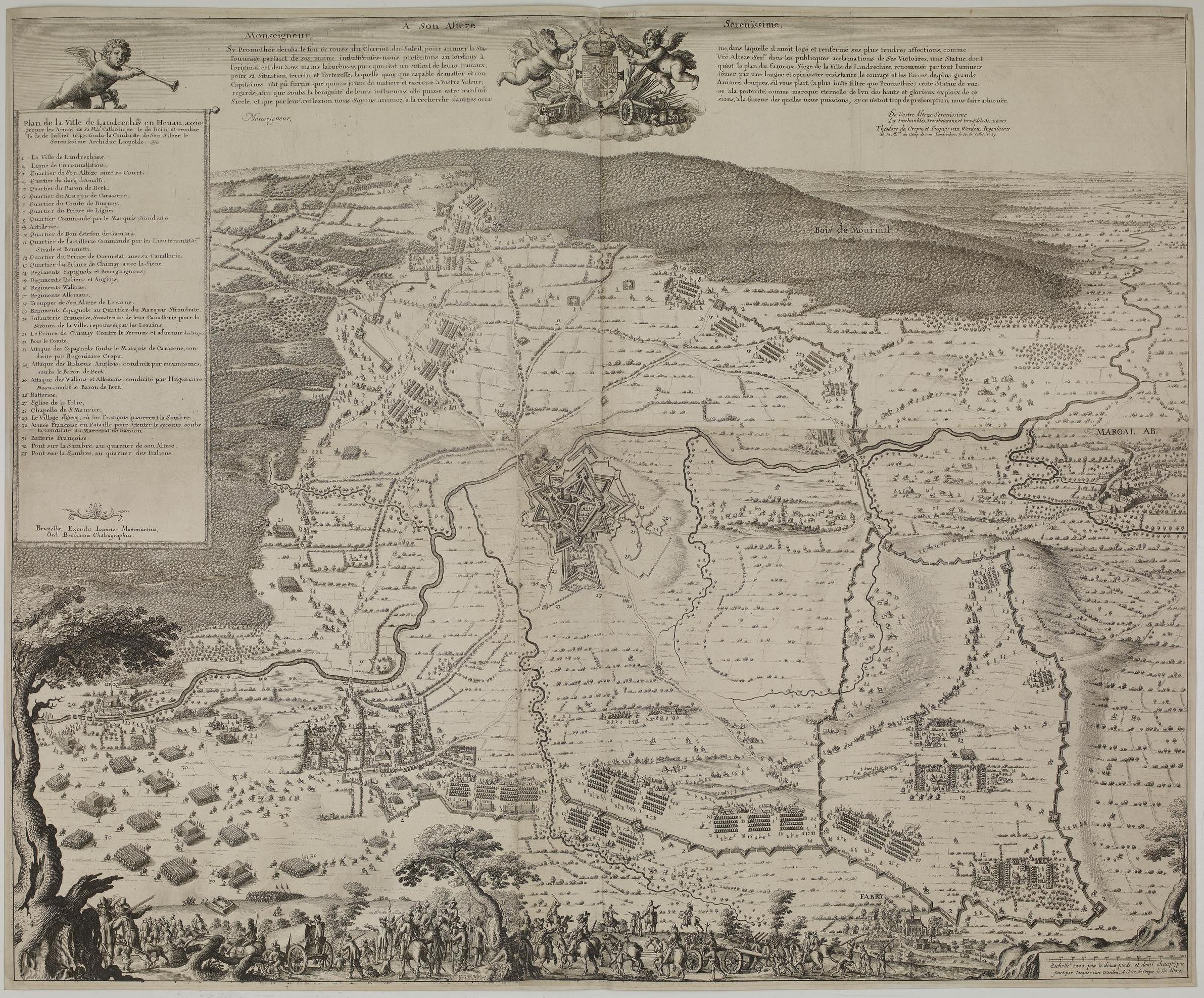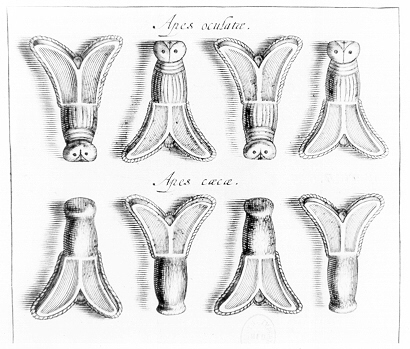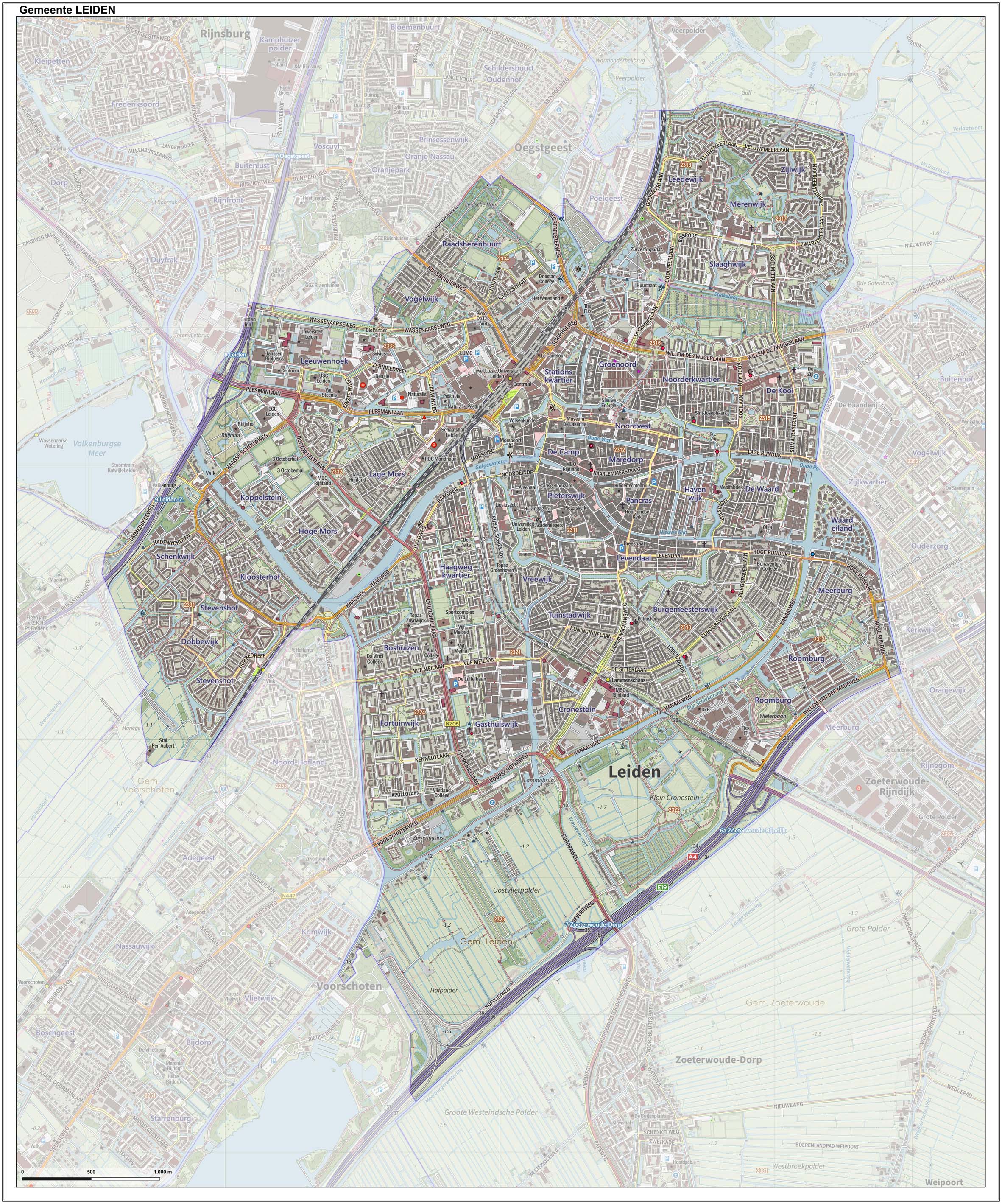|
Chifflet
Jean-Jacques Chifflet (Chiflet) ( Besançon, 1588–1660) was a physician, jurist, antiquarian and archaeologist originally from the County of Burgundy (now in France). Life He visited Paris and Montpellier Montpellier (, , ; oc, Montpelhièr ) is a city in southern France near the Mediterranean Sea. One of the largest urban centres in the region of Occitania (administrative region), Occitania, Montpellier is the prefecture of the Departments of ..., and travelled in Italy and Germany. By appointment of Philip IV of Spain he was physician to the Brussels court. He played a significant part in the controversy of the 1650s over Peruvian bark in treating malaria, publishing a sceptical pamphlet ''Pulvis Febrifugus Orbis Americani'' in 1653 after treating Archduke Leopold. At the behest of his employer, Archduke Leopold Wilhelm of Austria, who was then Governor of the Spanish Netherlands, he studied the objects which had been recovered from the tomb of Childeric I ... [...More Info...] [...Related Items...] OR: [Wikipedia] [Google] [Baidu] |
Jean-Jacques Chifflet (1588–1660), By Cornelis Galle II
Jean-Jacques Chifflet (Chiflet) (Besançon, 1588–1660) was a physician, jurist, antiquarian and archaeologist originally from the County of Burgundy (now in France). Life He visited Paris and Montpellier, and travelled in Italy and Germany. By appointment of Philip IV of Spain he was physician to the Brussels court. He played a significant part in the controversy of the 1650s over Peruvian bark in treating malaria, publishing a sceptical pamphlet ''Pulvis Febrifugus Orbis Americani'' in 1653 after treating Leopold I, Holy Roman Emperor, Archduke Leopold. At the behest of his employer, Archduke Leopold Wilhelm of Austria, who was then Governors of the Habsburg Netherlands, Governor of the Spanish Netherlands, he studied the objects which had been recovered from the tomb of Childeric I in Tournai. In 1655, Chifflet published at the Plantin Press in Antwerp an illustrated report on his findings entitled ''Anastasis Childerici I. Francorvm Regis, sive Thesavrvs Sepvlchralis Torn ... [...More Info...] [...Related Items...] OR: [Wikipedia] [Google] [Baidu] |
Jacob Van Werden
Jacob van Werden or Jacques van Weerden (''fl'', 1643 – before 20 August 1669), was a Flemish draughtsman, cartographer, military engineer and archer who was active in the Habsburg Netherlands.Philippe Bragard, ''Dictionnaire biographique des ingénieurs des fortifications. Pays-Bas espagnols, principauté de Liège, Franche-Comté, 1504-1713'' Namur, Les Amis de la Citadelle, 2011, 221-222 His drawings were used as designs for prints executed by various printmakers. He worked on maps, topographical views, historical scenes, por ... [...More Info...] [...Related Items...] OR: [Wikipedia] [Google] [Baidu] |
Cornelis Galle The Younger
Cornelis Galle the Younger, Cornelius Galle or Cornelis Galle (I) (bapt. 23 February 1615, Antwerp – 18 October 1678, Antwerp) was a Flemish printmaker. He worked mainly on publications for the Plantin Press in Antwerp for which he engraved devotional prints and book illustrations.Cornelis Galle (II) at the Netherlands Institute for Art History Life Cornelis was born in Antwerp as the son of Anne van der Motte and , an engraver in Antwerp who had worked in Rubens' workshop and the Plantin Press. His grandfather < ...[...More Info...] [...Related Items...] OR: [Wikipedia] [Google] [Baidu] |
Peruvian Bark
Jesuit's bark, also known as cinchona bark, Peruvian bark or China bark, is a former remedy for malaria, as the bark contains quinine used to treat the disease. The bark of several species of the genus ''Cinchona'', family Rubiaceae indigenous to the western Andes of South America, was discovered as a folk medicine treatment for malaria by Jesuit missionaries in Peru during the 17th century. History The western history of cinchona bark dates back more than 350 years. Circa 1650, the physician Sebastiano Bado declared that this bark had proved more precious to mankind than all the gold and silver that the Spaniards had obtained from South America. In the 18th century, the Italian professor of medicine Bernardino Ramazzini said that the introduction of Peruvian bark would be of the same importance to medicine that the discovery of gunpowder was to the art of war, an opinion endorsed by contemporary writers on the history of medicine. The value of Jesuit's bark, and the controve ... [...More Info...] [...Related Items...] OR: [Wikipedia] [Google] [Baidu] |
1660 Deaths
Year 166 ( CLXVI) was a common year starting on Tuesday (link will display the full calendar) of the Julian calendar. At the time, it was known as the Year of the Consulship of Pudens and Pollio (or, less frequently, year 919 ''Ab urbe condita''). The denomination 166 for this year has been used since the early medieval period, when the Anno Domini calendar era became the prevalent method in Europe for naming years. Events By place Roman Empire * Dacia is invaded by barbarians. * Conflict erupts on the Danube frontier between Rome and the Germanic tribe of the Marcomanni. * Emperor Marcus Aurelius appoints his sons Commodus and Marcus Annius Verus as co-rulers (Caesar), while he and Lucius Verus travel to Germany. * End of the war with Parthia: The Parthians leave Armenia and eastern Mesopotamia, which both become Roman protectorates. * A plague (possibly small pox) comes from the East and spreads throughout the Roman Empire, lasting for roughly twenty years. * ... [...More Info...] [...Related Items...] OR: [Wikipedia] [Google] [Baidu] |
1588 Births
__NOTOC__ Events January–June * February – The Sinhalese abandon the siege of Colombo, capital of Portuguese Ceylon. * February 9 – The sudden death of Álvaro de Bazán, 1st Marquis of Santa Cruz, in the midst of preparations for the Spanish Armada, forces King Philip II of Spain to re-allocate the command of the fleet. * April 14 (April 4 Old Style) – Christian IV becomes king of Denmark–Norway, upon the death of his father, Frederick II. * May 12 – Day of the Barricades in Paris: Henry I, Duke of Guise seizes the city, forcing King Henry III to flee. * May 28 – The Spanish Armada, with 130 ships and 30,000 men, begins to set sail from the Tagus estuary, under the command of the Duke of Medina Sedonia and Juan Martínez de Recalde, heading for the English Channel (it will take until May 30 for all of the ships to leave port). July–December * July – King Henry III of France capitulates to the Duke of Guise, and ret ... [...More Info...] [...Related Items...] OR: [Wikipedia] [Google] [Baidu] |
Dictionnaire Universel D'histoire Et De Géographie
''Dictionnaire Bouillet'' is the informal title of the ''Dictionnaire universel d'histoire et de géographie'' ("Universal Dictionary of History and Geography"), a French reference work in the public domain. The first edition was published in 1842; the 34th and final edition was published in 1914. The original authors were Marie-Nicolas Bouillet (d. 1865) and Alexis Chassang (1827–78). Neutrality of later editions Editions after 1852 were amended, probably clandestinely and by the typographers rather than the authors, to make certain articles less offensive to Christian sensibilities. For example, for Cardinal Ximenes, the original ''Il était fanatique et cruel'' ("He was fanatical and cruel") was changed to read ''Il était sévère, mais juste'' ("He was tough but fair"). References to sales of religious indulgences were deleted entirely. The neutrality of editions after 1842 is therefore open to question when the work touches on Christian themes. References External ... [...More Info...] [...Related Items...] OR: [Wikipedia] [Google] [Baidu] |
Knights Of The Golden Fleece
The Distinguished Order of the Golden Fleece ( es, Insigne Orden del Toisón de Oro, german: Orden vom Goldenen Vlies) is a Catholic order of chivalry founded in Bruges by Philip the Good, Duke of Burgundy, in 1430, to celebrate his marriage to Isabella of Portugal. Today, two branches of the order exist, namely the Spanish and the Austrian Fleece; the current grand masters are Felipe VI, King of Spain and Karl von Habsburg, head of the House of Habsburg-Lorraine, respectively. The Grand Chaplain of the Austrian branch is Cardinal Christoph Schönborn, Archbishop of Vienna. The separation of the two existing branches took place as a result of the War of the Spanish Succession. The grand master of the order, Charles II of Spain (a Habsburg) had died childless in 1700, and so the succession to the throne of Spain and the Golden Fleece initiated a global conflict. On one hand, Charles, brother of the Holy Roman Emperor, claimed the crown as an agnatic member of the House of H ... [...More Info...] [...Related Items...] OR: [Wikipedia] [Google] [Baidu] |
17th-century French Writers
The 17th century lasted from January 1, 1601 ( MDCI), to December 31, 1700 ( MDCC). It falls into the early modern period of Europe and in that continent (whose impact on the world was increasing) was characterized by the Baroque cultural movement, the latter part of the Spanish Golden Age, the Dutch Golden Age, the French '' Grand Siècle'' dominated by Louis XIV, the Scientific Revolution, the world's first public company and megacorporation known as the Dutch East India Company, and according to some historians, the General Crisis. From the mid-17th century, European politics were increasingly dominated by the Kingdom of France of Louis XIV, where royal power was solidified domestically in the civil war of the Fronde. The semi-feudal territorial French nobility was weakened and subjugated to the power of an absolute monarchy through the reinvention of the Palace of Versailles from a hunting lodge to a gilded prison, in which a greatly expanded royal court could be more easily ... [...More Info...] [...Related Items...] OR: [Wikipedia] [Google] [Baidu] |
Leiden
Leiden (; in English and archaic Dutch also Leyden) is a city and municipality in the province of South Holland, Netherlands. The municipality of Leiden has a population of 119,713, but the city forms one densely connected agglomeration with its suburbs Oegstgeest, Leiderdorp, Voorschoten and Zoeterwoude with 206,647 inhabitants. The Netherlands Central Bureau of Statistics (CBS) further includes Katwijk in the agglomeration which makes the total population of the Leiden urban agglomeration 270,879, and in the larger Leiden urban area also Teylingen, Noordwijk, and Noordwijkerhout are included with in total 348,868 inhabitants. Leiden is located on the Oude Rijn, at a distance of some from The Hague to its south and some from Amsterdam to its north. The recreational area of the Kaag Lakes ( Kagerplassen) lies just to the northeast of Leiden. A university city since 1575, Leiden has been one of Europe's most prominent scientific centres for more than four centuri ... [...More Info...] [...Related Items...] OR: [Wikipedia] [Google] [Baidu] |
17th-century French Male Writers
The 17th century lasted from January 1, 1601 ( MDCI), to December 31, 1700 ( MDCC). It falls into the early modern period of Europe and in that continent (whose impact on the world was increasing) was characterized by the Baroque cultural movement, the latter part of the Spanish Golden Age, the Dutch Golden Age, the French '' Grand Siècle'' dominated by Louis XIV, the Scientific Revolution, the world's first public company and megacorporation known as the Dutch East India Company, and according to some historians, the General Crisis. From the mid-17th century, European politics were increasingly dominated by the Kingdom of France of Louis XIV, where royal power was solidified domestically in the civil war of the Fronde. The semi-feudal territorial French nobility was weakened and subjugated to the power of an absolute monarchy through the reinvention of the Palace of Versailles from a hunting lodge to a gilded prison, in which a greatly expanded royal court could be more easi ... [...More Info...] [...Related Items...] OR: [Wikipedia] [Google] [Baidu] |
%2C_by_Cornelis_Galle_II.jpg)





